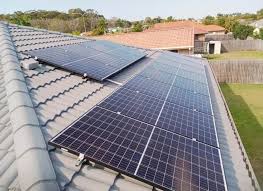On a scorching summer afternoon, Mark opened his refrigerator and felt a wave of frustration. The power had gone out again. His food was warming, his ice was melting, and his patience was gone. Something about that moment pushed him to finally research solar. His first question was simple: How Many Solar Panels Do You Really Need to Run a Fridge 24/7?
That night, Mark realized that powering a fridge with solar wasn’t complicated at all—it just required understanding energy usage, sunshine hours, and battery storage.
Many homeowners ask the same question, so let’s simplify the entire process clearly.
Understanding Your Refrigerator’s Power
Before calculating the solar panels needed, it’s important to understand how much electricity your fridge uses every day.
Average Daily Energy Consumption
A typical modern refrigerator consumes between 1–2 kWh per day. The exact usage depends on:
- Refrigerator size
- Age of the appliance
- Energy efficiency rating
- How often the door opens
- Climate and kitchen temperature
While the compressor may pull around 150–250 watts when running, it cycles throughout the day, not continuously. This brings the average real consumption to about 1.2–1.8 kWh per day.
For calculation purposes, we’ll use 1.5 kWh per day as a realistic average.
How Much Power a Solar Panel Produces
To run your fridge nonstop, your solar panels must generate enough energy during the day to run the fridge and recharge the battery.
Daily Output of a 400W Panel
A standard 400W panel produces:
- Around 1.6 kWh per day in a 4-sun-hour region
- Around 2.0 kWh per day in a 5-sun-hour region
- Around 2.4 kWh per day in a 6-sun-hour region
States like Texas, Florida, Nevada, and California average 5–6 sun hours, while northern states may have 3–4.
Calculating the Number of Panels
With a fridge using 1.5 kWh daily, here is what the math looks like.
In a 4 Sun-Hour Region
1.5 kWh divided by 1.6 kWh from one panel
Equals about 1 solar panel required.
In a 5–6 Sun-Hour Region
1.5 kWh divided by 2.0–2.4 kWh from one panel
Equals 1 solar panel with extra margin.
Real-World Expectation
Because clouds, dirt, shading, inverter losses, and heat impact performance, real-world setups often use 1–2 solar panels for a reliable 24/7 refrigerator setup.
Battery Backup for Nighttime Power
A refrigerator must operate around the clock, even when the sun isn’t shining. That means solar panels alone are not enough.
Battery Size Needed
To keep a fridge running all night:
- Minimum battery storage: 1.5 kWh
- Recommended storage: 2–3 kWh for consistent reliability
Popular battery choices include:
- Portable solar batteries (2 kWh class)
- Enphase IQ batteries (3–10 kWh options)
- Tesla Powerwall (13.5 kWh for whole-home backup)
Even a small 2 kWh lithium battery can keep a fridge powered through the night easily.
Solar and Battery System Setup
A complete system for powering a refrigerator includes:
Main System Components
- One or two 400W solar panels
- A 2–3 kWh lithium battery
- A solar charge controller
- A 1–2 kW inverter
How This System Works
Your solar panels power the fridge during the day and charge the battery simultaneously. At night, the battery takes over. The next day, the cycle repeats.
This design ensures smooth, uninterrupted refrigeration.
What Can Increase Energy Demand
Older or Inefficient Fridges
Old refrigerators can consume two or three times more energy. In such cases, you may need three to four solar panels instead of one or two.
Large Family-Size Refrigerators
Bigger units, especially 25–30 cubic feet, require slightly more energy. Two panels and a larger battery bank are typically needed.
Hot Climates
High temperatures mean the compressor runs more often, increasing your energy demand.
Off-Grid Living
An off-grid refrigerator system must be sized with extra panels and more battery storage to avoid power shortages on cloudy days.
Example System Designs
Here are simple setups based on real-world conditions.
Basic Modern Fridge Setup
- One 400W solar panel
- One 2 kWh battery
- Solar charge controller and inverter
Ideal for newer, energy-efficient refrigerators.
High Reliability Setup
- Two 400W solar panels
- Around 3 kWh battery storage
Great for areas with variable weather and lower sunlight.
Full Off-Grid Setup
- Three 400W solar panels
- Five or more kWh battery storage
Provides stability even during several cloudy days.
Estimated Cost of a Complete Setup
A typical fridge-only solar kit costs between 1200 and 2200 USD, depending on panel quality and battery capacity.
Breakdown includes:
- 400W panel: 150–250 USD
- 2–3 kWh battery: 800–1500 USD
- Inverter and controller: 300–500 USD
This is significantly more affordable than full home solar systems.
Why Power a Fridge With Solar
Running a refrigerator 24/7 on solar offers:
- Protection during power outages
- Lower electricity bills
- Energy independence
- Quiet operation
- Long-term reliability
Many homeowners start their off-grid journey by powering just the refrigerator because it provides essential daily value.
Final Answer to the Big Question
Now we return to the core question: How Many Solar Panels Do You Really Need to Run a Fridge 24/7?
After analyzing real refrigerator consumption, sunlight availability, and battery requirements, the answer is simple.
Most households need:
- One to two solar panels
- A two to three kWh battery
- A small inverter and controller setup
With this combination, your refrigerator can run day and night without interruption.
Conclusion
Powering your refrigerator 24 hours a day with solar energy is easier than most people expect. The setup is affordable, simple, and dependable. With just one or two solar panels and a small battery bank, you can keep your fridge running smoothly no matter what happens with the grid.
So when the question arises again—How Many Solar Panels Do You Really Need to Run a Fridge 24/7?—you can confidently say that the solution is straightforward, practical, and within reach for nearly any homeowner.








